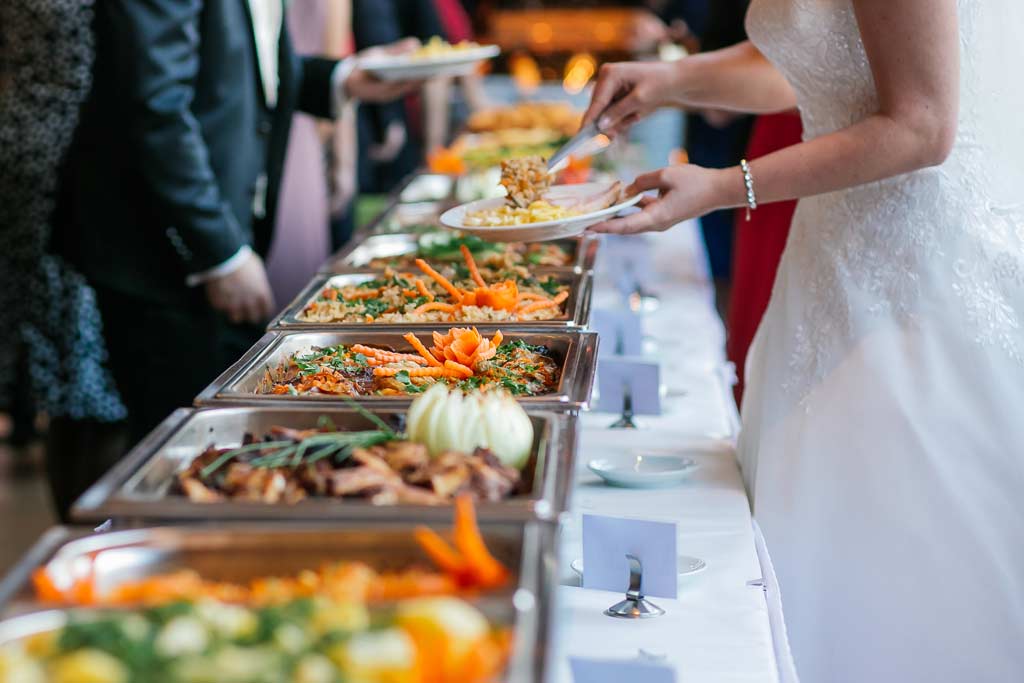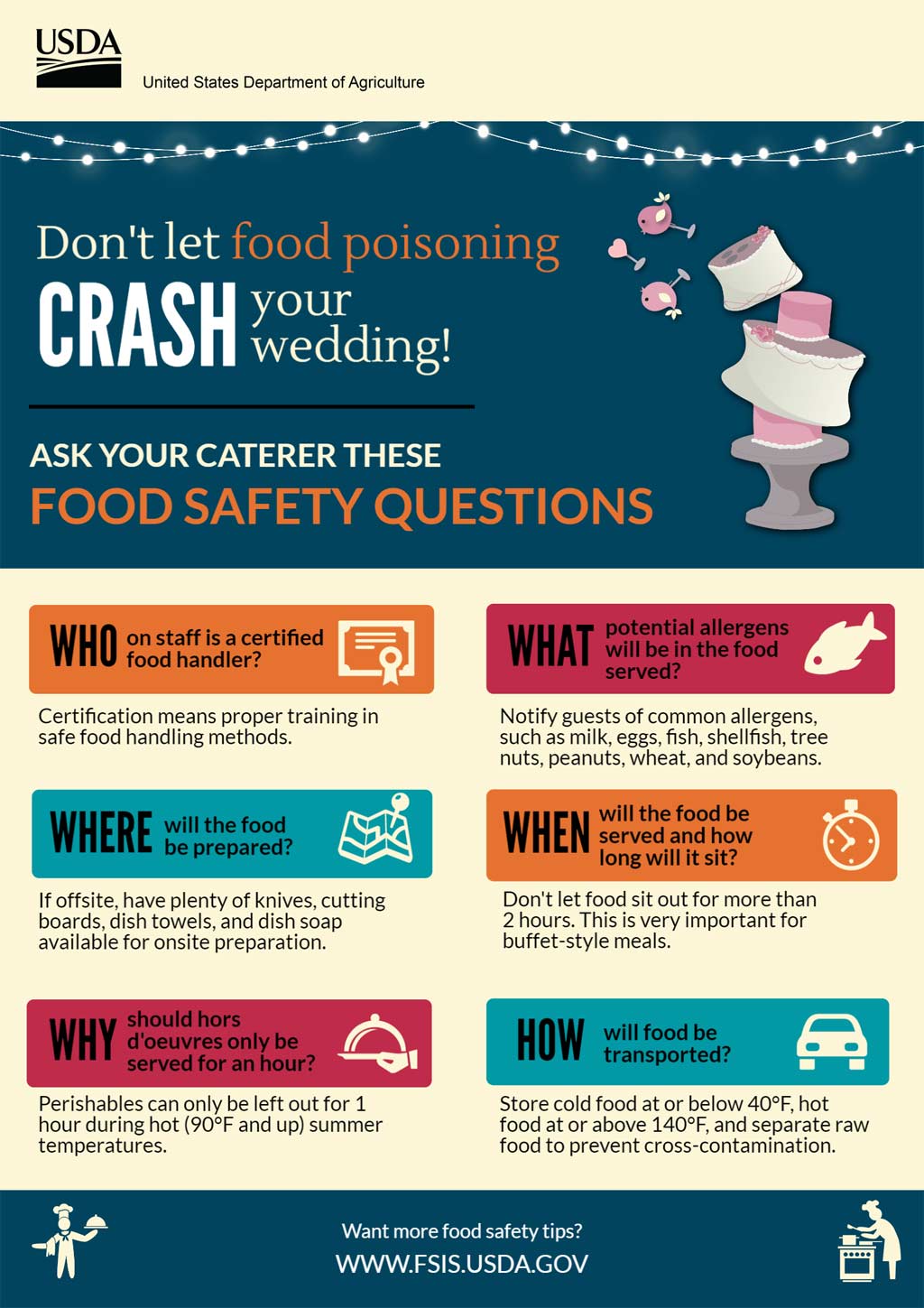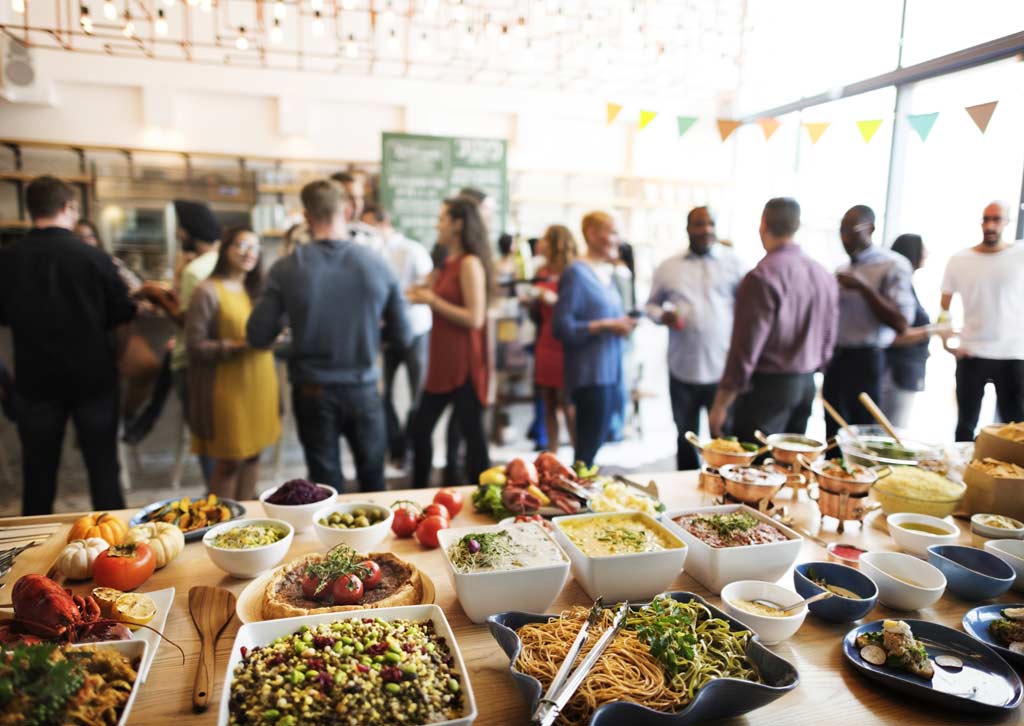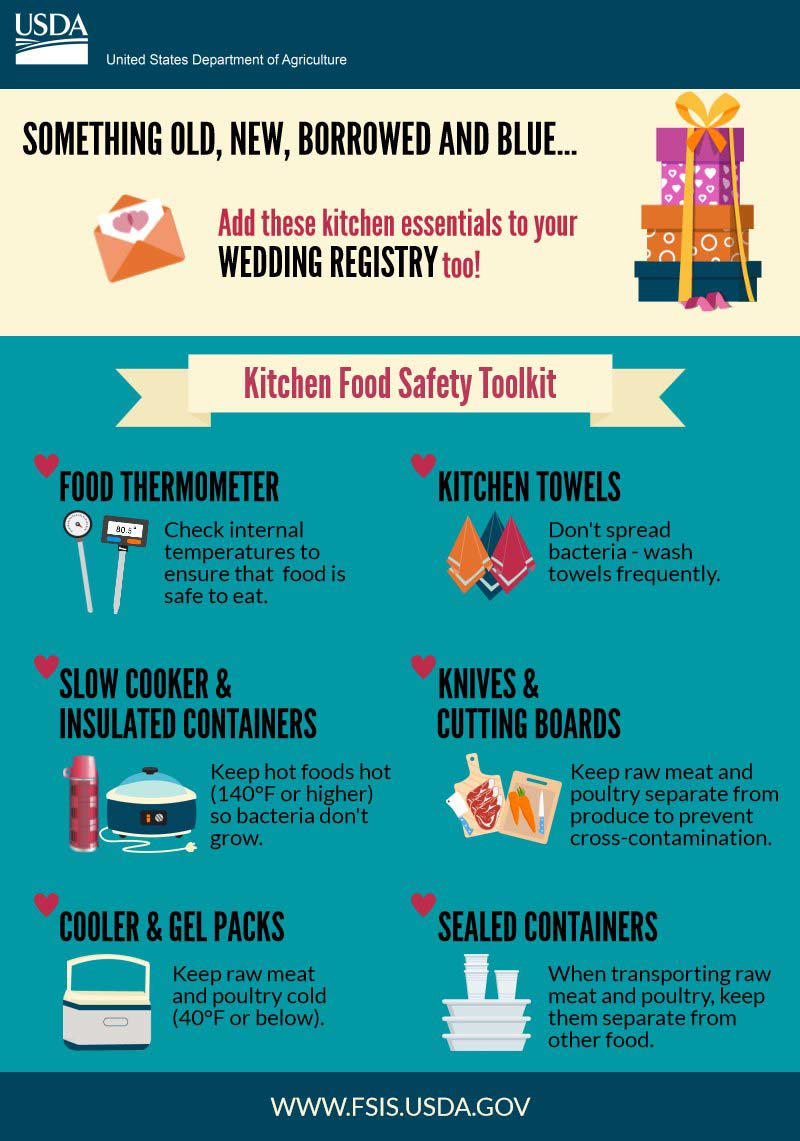Planning for a wedding can be overwhelming! But, don’t overlook a very important part of the celebration – food safety!
Whether you’re having a wedding reception catered or are self-catering, proper food safety principles will help ensure that your guests leave with only happy memories and not ones about being sick with a food illness.
Likewise, to help prevent food illness from happening at your wedding reception, it is important educate yourself on food safety and do some research into the caterer for your big day.



Food Safety Important to Keep Guests Safe
Do you know the temperature to keep food safe at your reception or party and prevent food illness? It is important for people to become educated and understand which negative behaviors and activities can contribute to the safety of food and foodborne illness.
Likewise, look for caterers who have a food safety certification for kitchen managers and food handlers, to make sure they’re properly trained in safe food handling methods.
- Learn about proper hygiene, cross contamination, cold and hot food safety, foodborne pathogens, and best practices to prevent foodborne illness.
- Food Manager Training & ANSI Certification - $99.00
- Food Handler Training - only $7.00!
- HACCP Training: 16hr/4hr/1hr
- Food Allergy Training - $15.00
- Enter Promo "train10off" at Checkout
Food Safety Questions to Ask Your Caterer
Choosing a caterer doesn’t have to be stressful. Making delicious food is just one part of the equation. You need to be sure they follow food safety measures so your guests don’t get sick. Here are seven food safety questions to ask your caterer:



- Who are the staff members certified food handlers?
If they are certified, this means the staff is all properly trained on safe food handling. - How do you transport food to the venue?
You want to ensure cold foods stay cold and hot foods (pre-prepared), stay hot. If caterers transport unsealed food containers in the same compartment, spillage and cross-contamination may occur. Items containing perishable ingredients like beef can spill onto food dishes containing items like rice and potatoes. Caterers should use sealable containers. - When/where is the food prepared?
If the food is prepared off-site, ensure the caterers safely transport the food. If the food is prepared on-site, ensure the caterers have the appropriate tools they need to prepare and serve the food. Budget conscious couples may choose a venue without a “fully stocked” kitchen. When this happens, communicating this information to the caterer will ensure that they prepare by bringing with multiple knives, serving spoons, cutting boards, and dish towels. - How long after food—especially meat, poultry, seafood and eggs—is cooked is it brought out to guests?
Perishable foods should not sit out at room temperature for more than two hours. This will ensure that your guests are served a hot and, more importantly, safe meal. - How long does the buffet remain open and how will the caterer avoid the food entering the “danger zone”?
Ask the caterer to provide chafing dishes or warming trays to keep hot foods hot, and ice or other cold source to keep cold foods cold. Otherwise, food may enter the “danger zone,” between 40 and 140°F, where bacteria multiply rapidly. Never leave perishable foods in the “danger zone” for more than two hours; one hour in temperatures above 90°F. After two hours, food that has been sitting out should be replaced with fresh food. - Are there any potential allergens used in the preparation of the food?
You should certainly ask your caterer if there are any allergens in the dishes, including nuts, soy, milk, eggs, wheat and fish/shellfish. If there are, guests should be notified in some way. - Do you use a food thermometer to check that food is properly cooked?
The answer must be yes! No one (not even a caterer) can tell if meat is properly cooked by its color – they must use a meat thermometer.



Temperature Danger Zone
The Temperature Danger Zone is the temperature range between 40°F and 140°F. At temperatures of 90°F and above, bacteria multiply rapidly.
While foodborne illness usually means uncomfortable intestinal flu-like symptoms, it can be serious for young children, the elderly and persons with chronic illnesses.



Self-Catering Weddings
If your family decides to cater the event themselves, consider reviewing the USDA publication, Cooking for Groups (PDF). It offers guidelines on preparing large quantities of food.
For brides and grooms who choose to prepare the wedding food on their own without a caterer, in addition to the above food safety tips, keep in mind the following:
- Separate raw foods from cooked foods.
- Do not use utensils on cooked foods that were previously used on raw foods.
- Chill foods promptly after preparing and when transporting from one place to another.



Wedding Registry – Include Food Safety Tools









